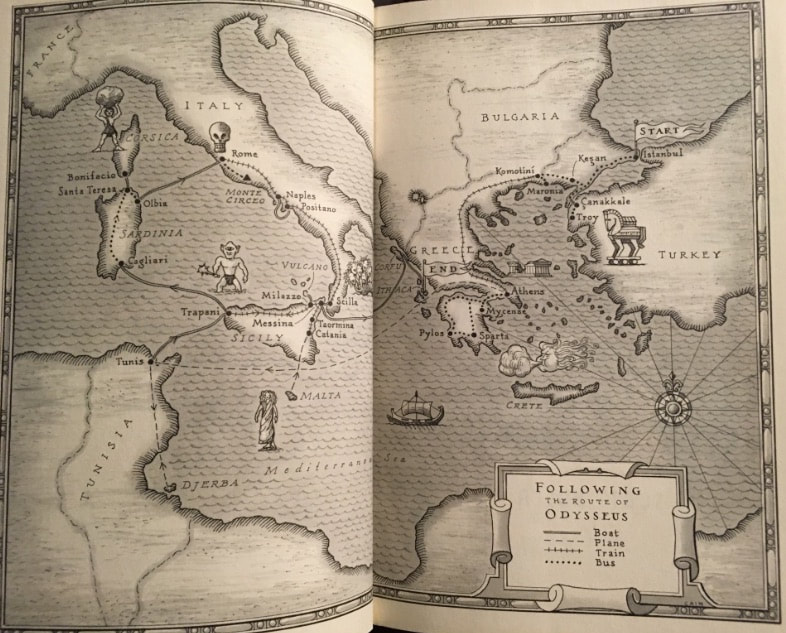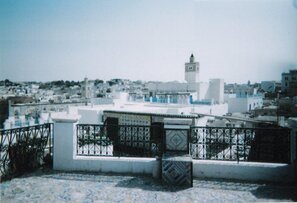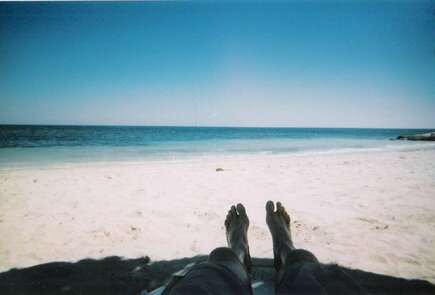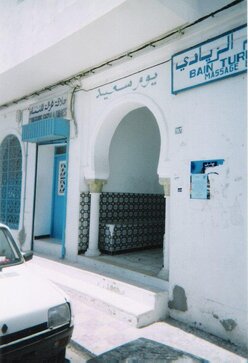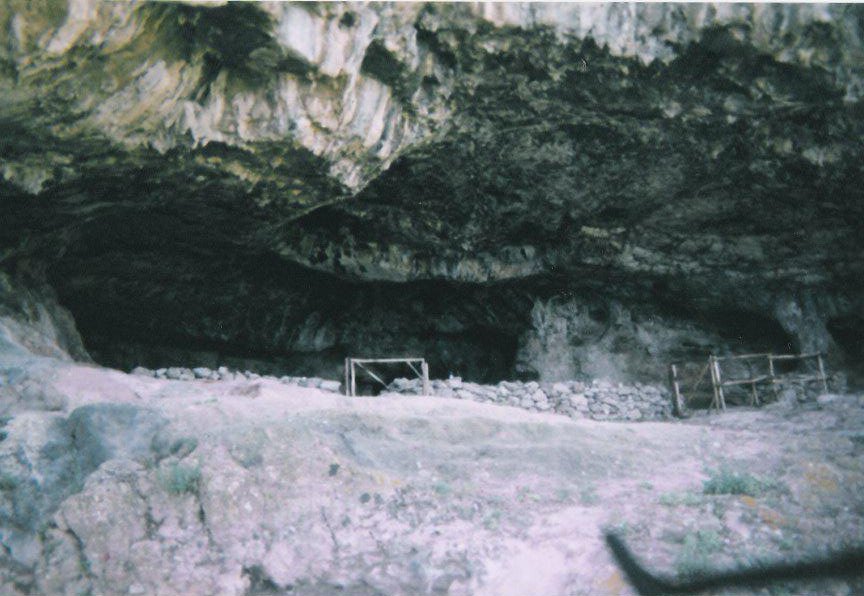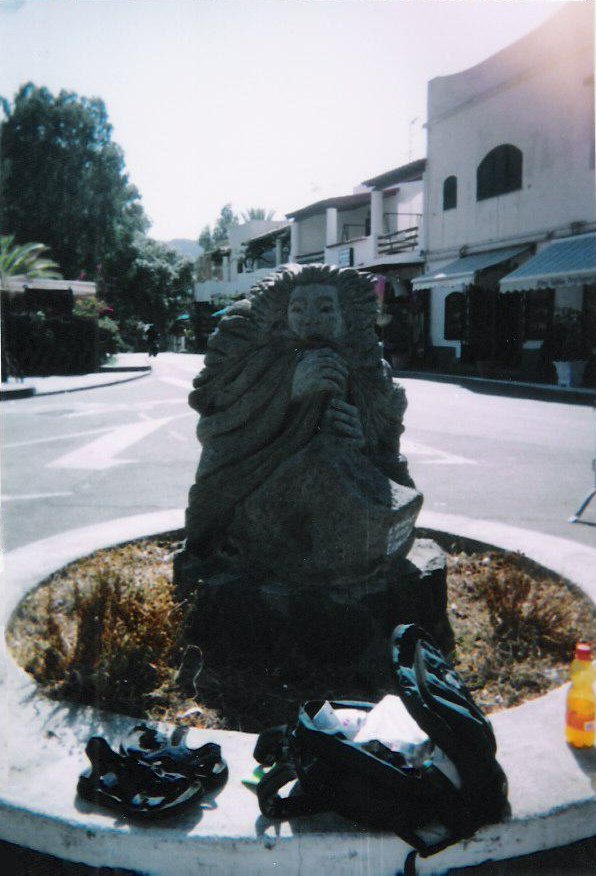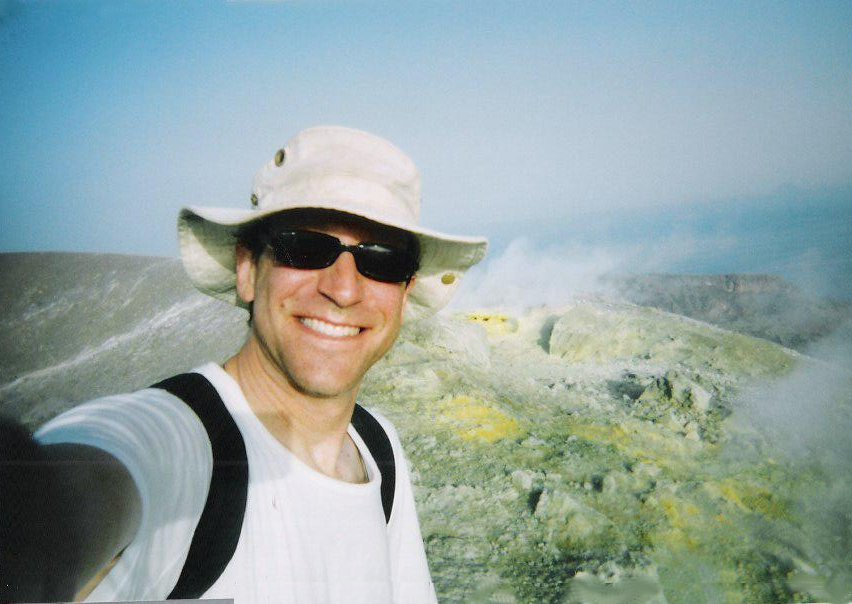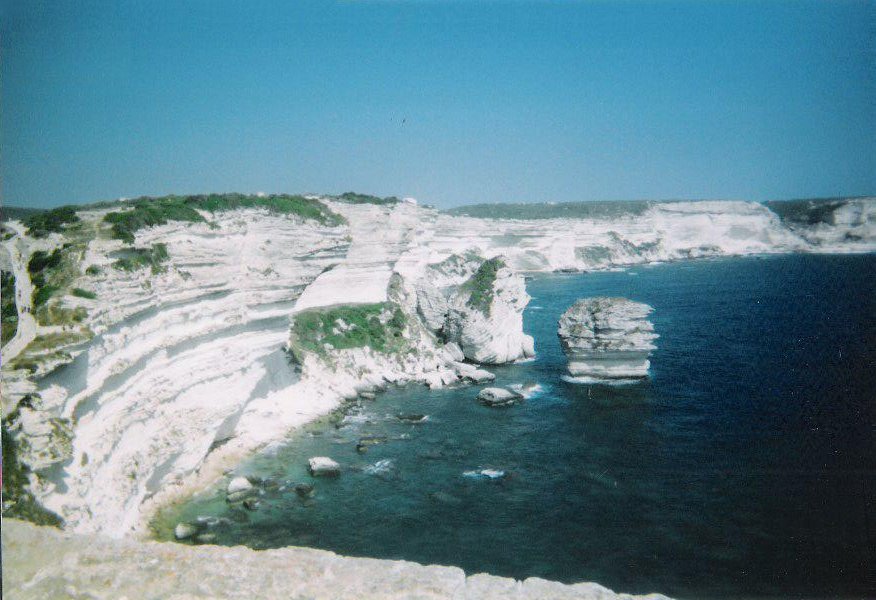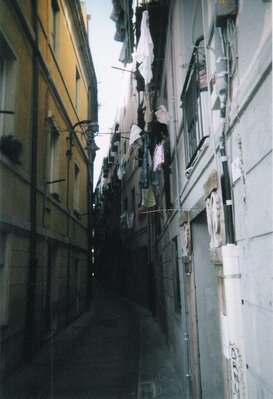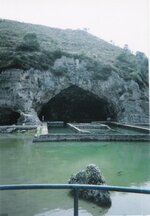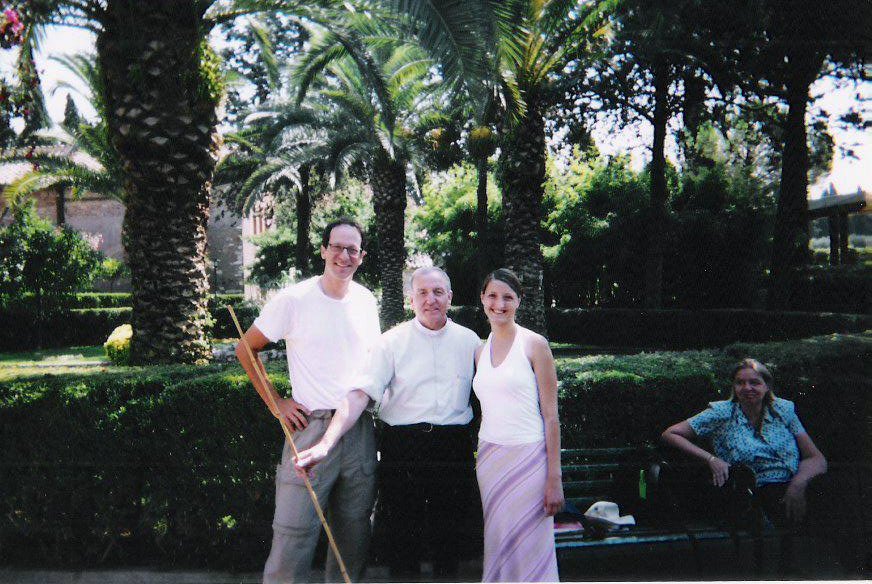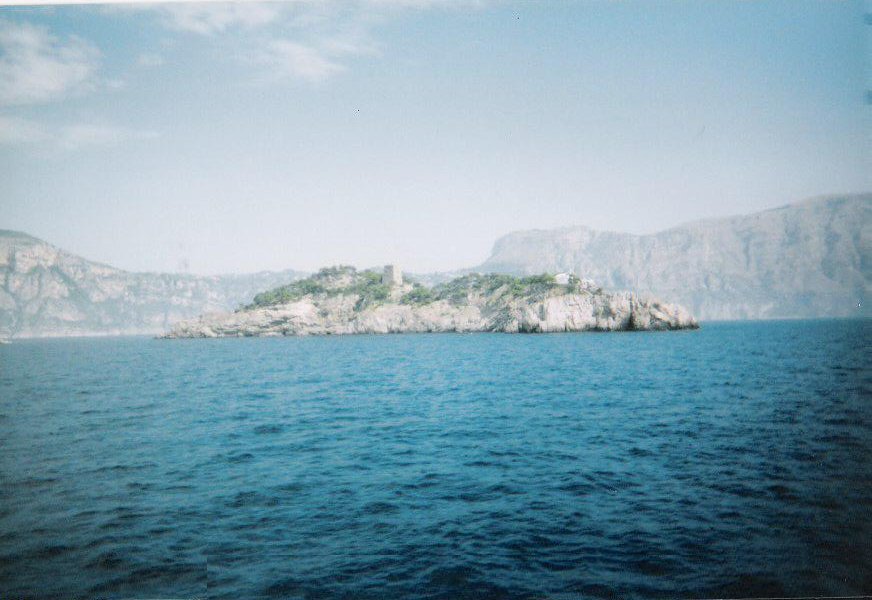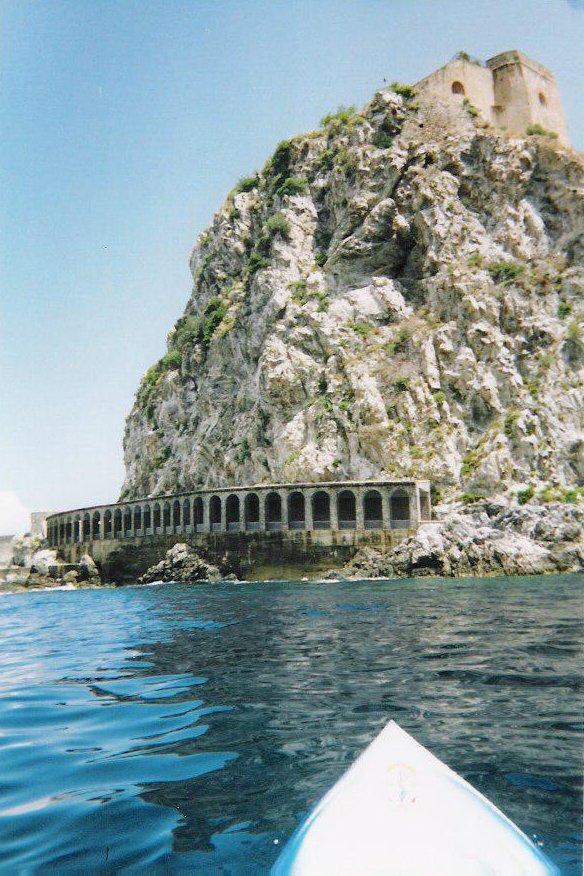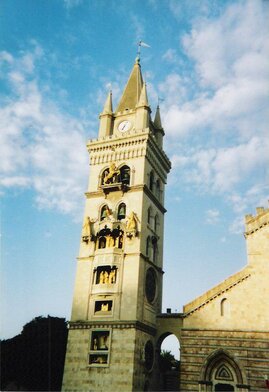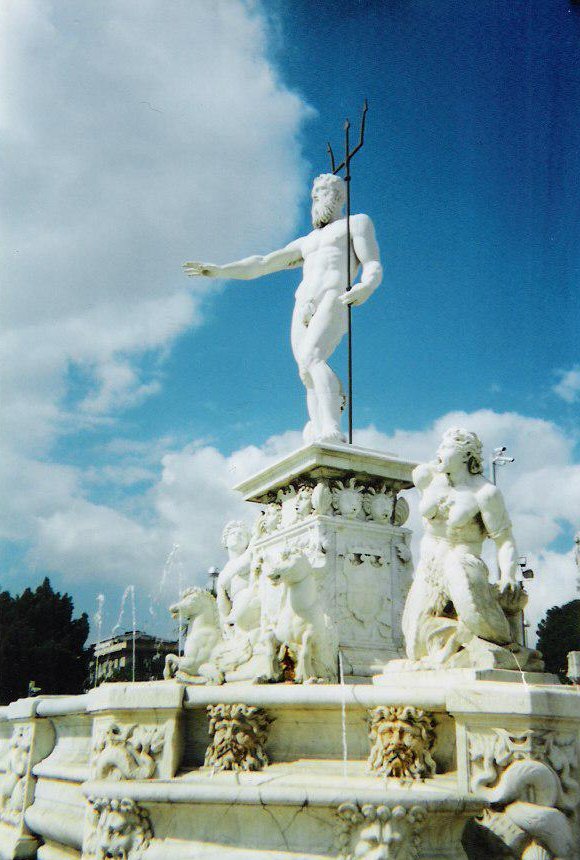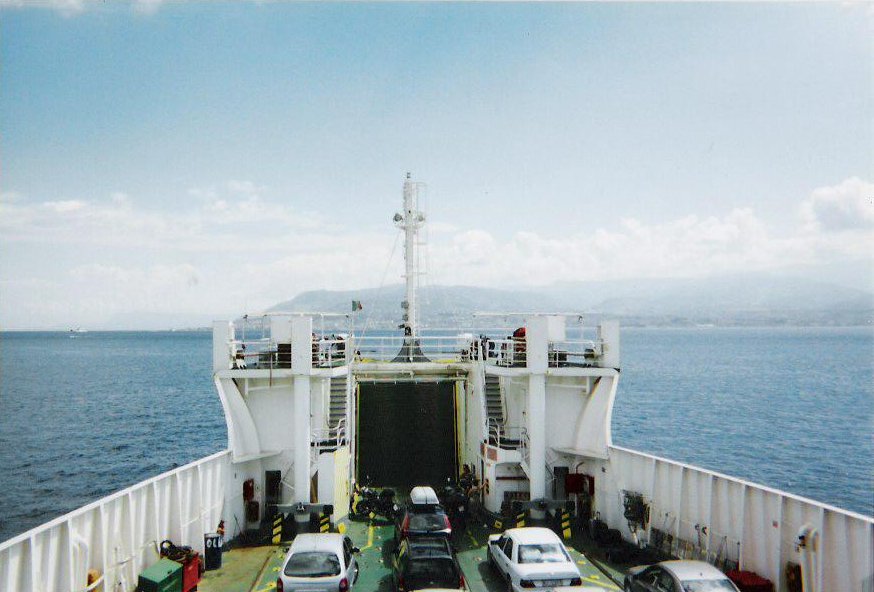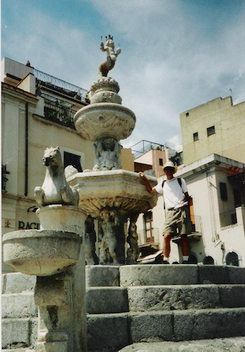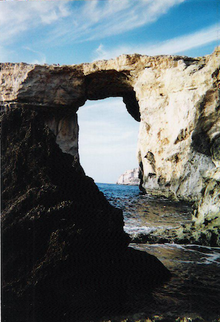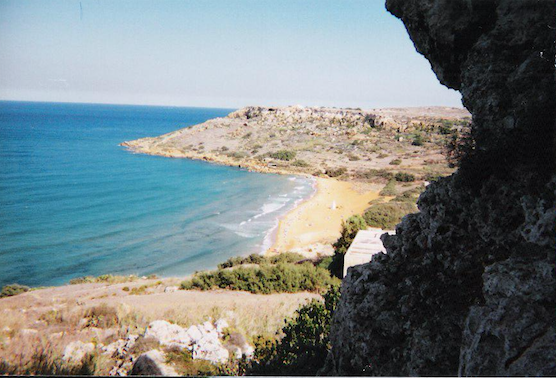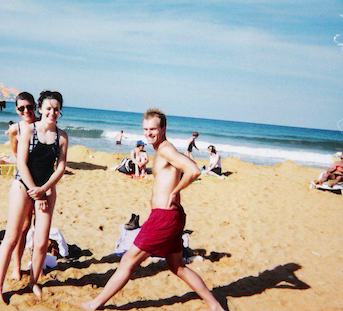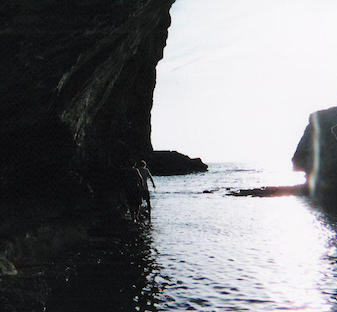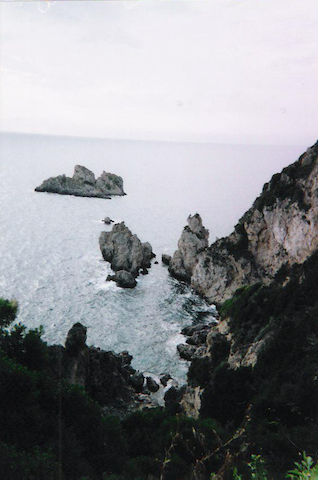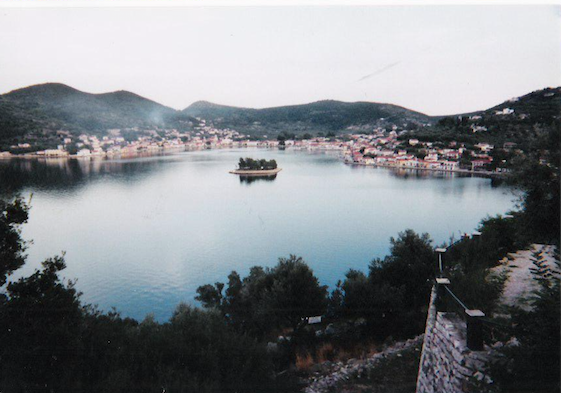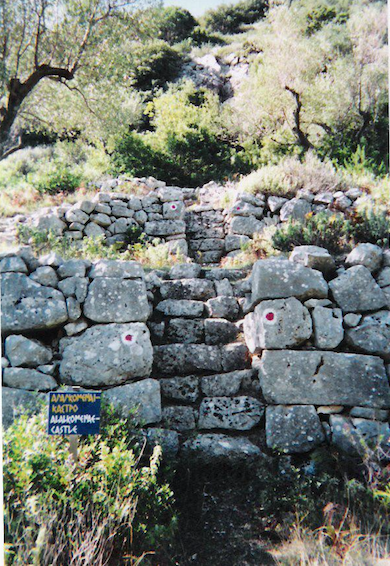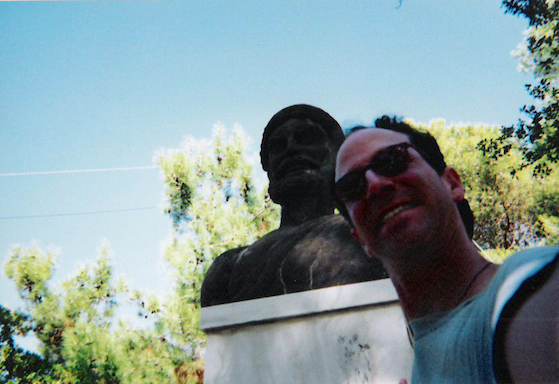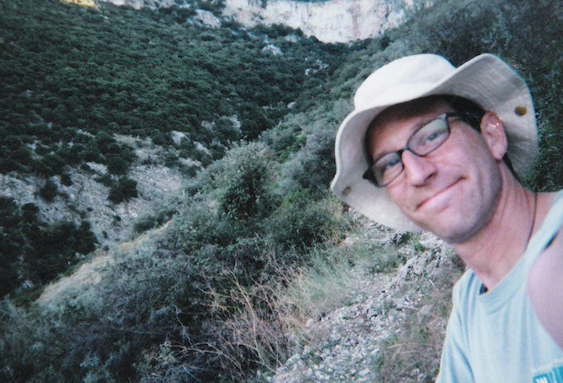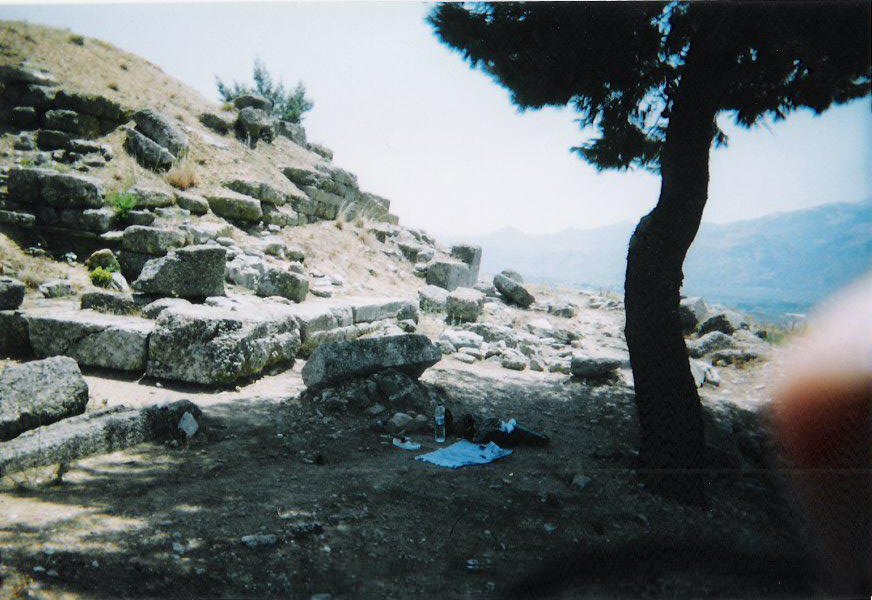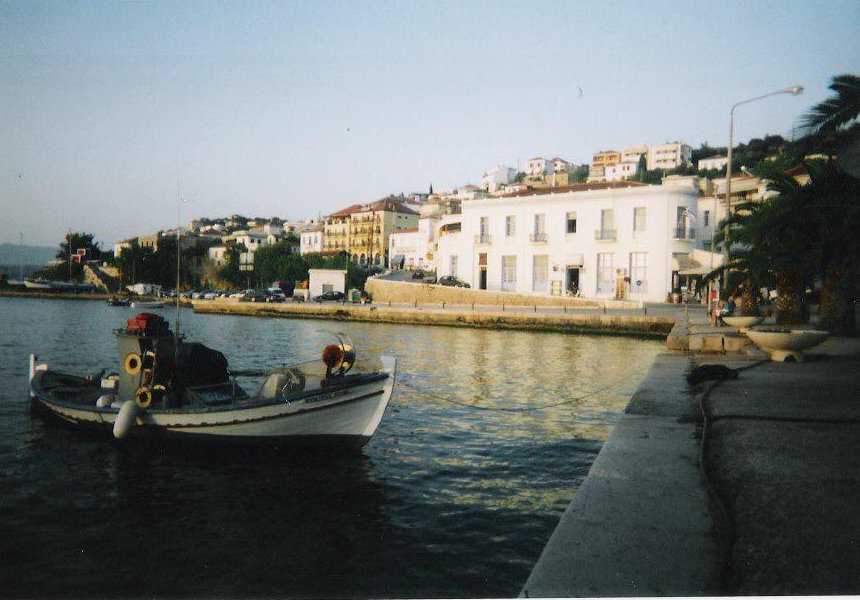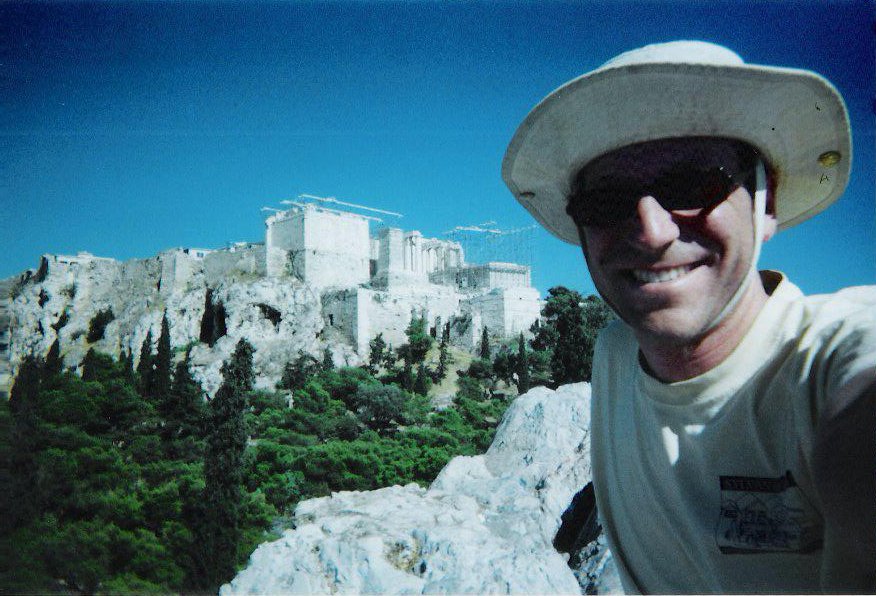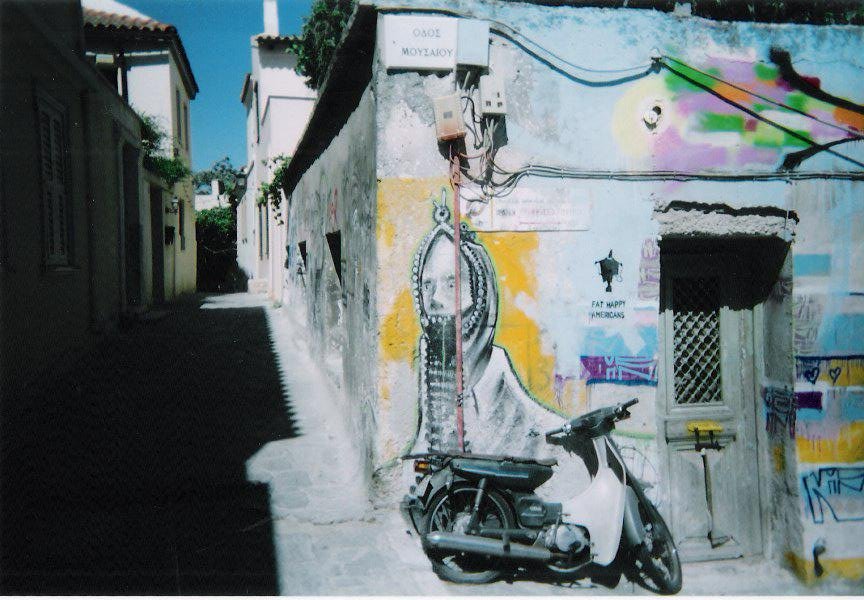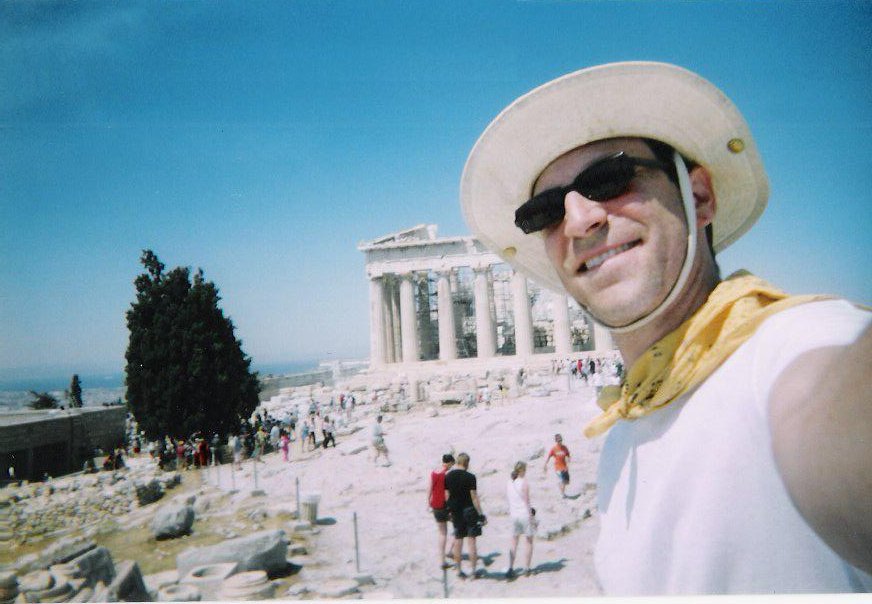Through No-Man's Lands on the Trail of Odysseus: Images from the Mediterranean
Samuel Johnson famously said, "The grand object of traveling is to see the shores of the Mediterranean.... All our religion, almost all our law, almost all our arts, almost all that sets us above savages, has come to us from the shores of the Mediterranean." Leaving out Johnson's time-bound and cringe-inducing thoughts about "savages," he's right about the Mediterranean. This book about retracing the journey of Odysseus took me (like Odysseus) all around the Mediterranean. I took pictures. Here, in order, are the snaps I took along the route Odysseus and I shared.
Windy Troy |
Odysseus make his journey as he's trying to get home from the Trojan War. Because of the German archaeologist Heinrich Schliemann, we know where ancient Troy was, on the Dardanelles between Europe and Asia, between Turkey and Greece. Odysseus is the guy who came up with the famous Trojan Horse gambit that won the war, so naturally now at Troy there's a hokey, touristy wooden horse you can put down a couple skillion Turkish Lire to climb. The tourbooks make fun of it, but my god: why wouldn't you climb it? I did. That's me hanging out the window. Below are the actual walls Homer describes.
|
The Cicones
|
After whupping the Trojans, the victorious Greeks head home, causing a ruckus among the first people they meet, the Cicones. All sources ancient and modern seem to agree the Cicones lived on the north shore of the Mediterranean, in eastern Greece. The Cicones give the Greeks more than they bargained for. Now there's some ancient Roman ruins there, and a nice beach.
|
The Lotus Eaters
|
After the dustup with the Cicones, Odysseus and his men get blown all over by a nine-day storm, ending up among the Lotus Eaters, who lure them to torpidity with the fruit of the lotus. Many geographers ancient and modern place the Lotus Eaters along the Tunisian coast. The island of Djerba is now a resort community, where beach torpidity is encouraged. There's plenty else to see, though. I recommend visiting the baths and medina, both on Djerba and in Tunis.
|
In the Cyclops's Cave
|
Odysseus has his most famous adventure when he gets captured in the cave of the Cyclops and has to save as many of his men as he can from the giant one-eyed monster. Odysseus famously tells the Cyclops to call him "No-man," then gets the monster drunk and has his men poke out his single eye. When the enraged monster cries out that "No-man is killing me!" the other Cyclopes figure his troubles are with the Gods and don't mix in. Clever fellow, that Odysseus. The story of the clever little guy defeating the big dumb guy seems to show up everywhere humanity does, from David and Goliath to Jack and the Beanstalk. But the fact that there's an actual cave on the tip of Sicily, right where people say Odysseus traveled, is pretty cool. It's on Via Ciclope, if you want to know. I'm totally not kidding.
|
On the Island of the Wind King
From the Cyclops Odysseus and his crew flee to the island of the wind king, Aeolus, who has dominion over all the winds of the world. Among the places people have chosen for the mythological king's abode are the Aeolian Islands, just north of eastern Sicily. There on the island of Vulcano you can find not only a statue of Aeolus himself but a smoking fumarole, from which "winds" issue ceaselessly. No less than Aristotle himself believe that the wind came from holes in the ground, so it's understandable how the idea spread.
The Deadly Laestrygonians
Things go badly wrong for Odysseus and his fleet when they dock in the harbor of the giant, man-eating Laestrygonians. From the high cliffs surrounding their almost invisible harbor the giants throw boulders on the fleet and spear the hapless sailors like fish. A harbor meeting exactly that description lays at the southern tip of the French island of Corsica. When you approach it from the south by ferry you can't see the harbor until you're almost upon it, and the cliffs are almost vertical. It's a beautiful Mediterranean city now.
The Witch Circe and the Journey to the Underworld
|
From the Laestrygonians Odysseus, down to a single ship and crew (he left Troy with a dozen!), sails until he finds himself on the island of the witch Circe, nowadays connected with Monte Circeo, on a peninsula south of Rome. I made my way to a museum there where I found a statue of Circe that had been found in a cave. Circe tells Odysseus he needs to go to the land of the dead, and he takes his men there and returns. The best I could do for a visit to the land of the dead was a trip to the catacombs in Rome. There I met a helpful priest guide and a fellow traveler named Asli.
|
The Sirens
|
The Sirens famously reside on an island, singing songs promising information to lure sailors to their deaths; Circe tells Odysseus how to avoid trouble. Near Naples are the Li Galli Islands, which people have for centuries associated with the Sirens. A tiny private boat with a cheerful, grinning captain rode me to them. Like Odysseus, I lived to tell the tale.
|
Scylla and Charybdis
Circe also tells Odysseus how to sail between the sea monster Scylla and the terrible whirlpool Charybdis. I ferried back and forth several times between the two points with no incidents. I even rented a kayak. No monster, no whirlpool. I did find a statue of Poseidon, though, with Scylla on one side and Charybdis on the other. Note gaping maw!
The Cattle of the Sun God
|
Odysseus manages to steer his lone remaining ship full of men between Scylla and Charybdis, following Circe's guidance and losing only six men to the monster. A seer he met in the Underworld and Circe both agreed: next stop is the island of the Sun God, Helios. Stay a while, but whatever you do, DO NOT EAT THE CATTLE. Odysseus takes a nap and guess what his men do. Go on, guess. Yep. The town of Taormina, in western Sicily, has a little statue of a minotaur, the city's symbol, that people associate with the cattle.
|
The Nymph Calypso on her Island of Ogygia
Odysseus has been traveling around for three years or so: a couple among various monsters and a year with Circe, which he had to spend sleeping with her. Tough life. But after his men eat the cattle of the sun god, he and they try to sail away from the island, but their boat is of course destroyed. The men all die but Odysseus, who, alone, is saved by the nymph Calypso, who lives on her island paradise of Ogygia. There she keeps Odysseus in sexual thrall for seven more years. When we meet him he is sitting on the beach, looking homewards, and crying. Homer describes Ogygia as in the center of the Mediterranean, and the island Gozo, of the archipelago of Malta, fits the bill. There's a little cave there and a beach pointing the right direction and everything. I visited and met a flight crew that I kicked around with for a day. We swam around off the beaches, bobbing in the Mediterranean like corks.
The Oar-Loving Phaeacians
|
Odysseus finally convinces the immortal goddess to free him from his terrible sexual slavery, and he boards a raft for home. Naturally more storms, because Poseidon is still mad at him (long story; read the book). But he eventually washes ashore on the island of the Phaeacians, master sailors. There he tells the story of his troubles, and they offer to return him finally to Ithaca. As a last poke from Poseidon, in anger for their helping Odysseus, Poseidon turns one of their ships into stone just outside their harbor. The Greek island of Corfu has long been associated with the Phaeacians, and in one of its harbors there's even a rock that looks kinda like a ship.
|
Home at Last
The Phaeacians spirit Odysseus back to Ithaca, where the harbor looks just as Homer described it. There are lots of other physical manifestations of Homer's tale on the island, some clearly created as a result of the story. But there's an ancient castle about where Homer describes Odysseus's home, a bust of Odysseus to take a selfie with, and so forth. If you're following Odysseus, Ithaca is where you're going to end. Just the same, some modern archaeologists believe Homer's Ithaca was actually the western edge of the modern island of Kefalonia, which is furthest to the west of the Greek islands as Homer describes Ithaca, and could easily have been connected to Kefalonia in one of the area's enormous earthquakes. Who knows? It's kind of poetic that we never will.
Et Cetera
Of course the Odyssey also includes the voyage of Telemachus around the Greek mainland, so if you're around there you're going to see Sparta, Pylos, and places like the Parthenon. I mean if you're there, right?
|
|
Sounds!
Here are a few sounds from this Odyssey enterprise.
